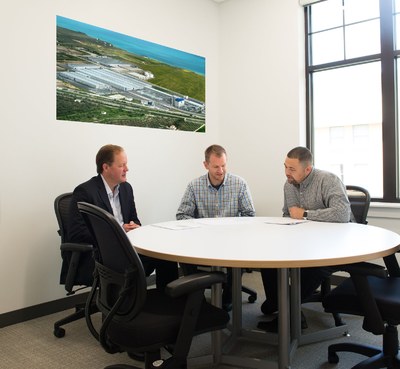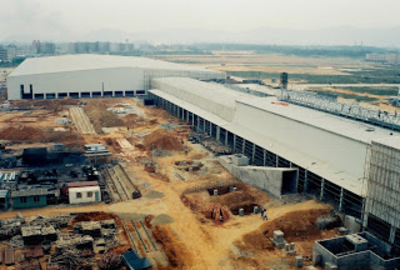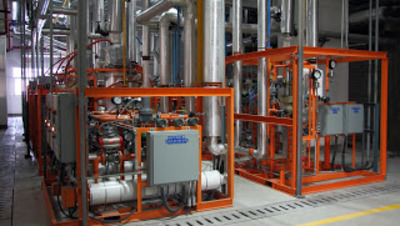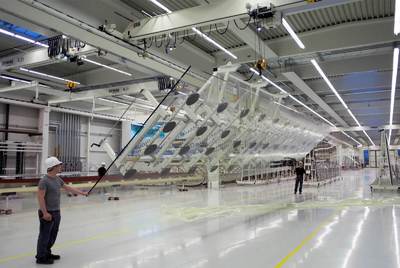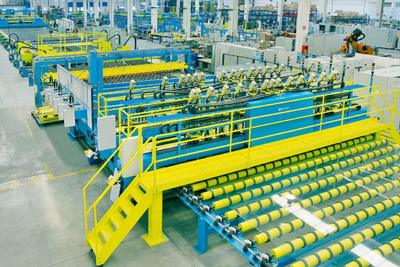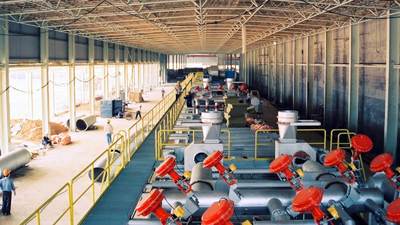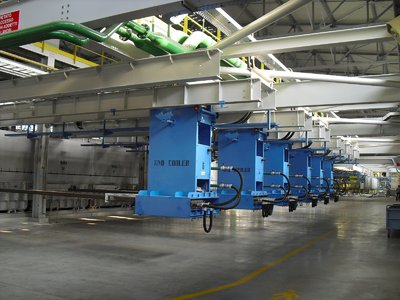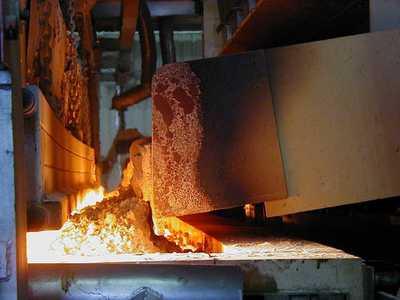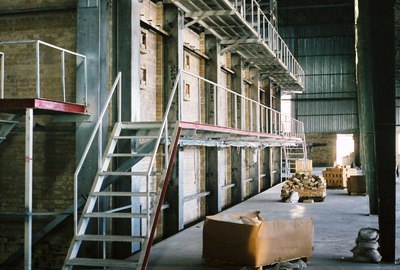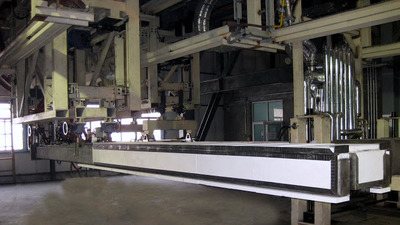Glass Coating Technology Comparison
A variety of techniques are available to deposit thin films onto flat glass. The most widely used of these for producing high-quality functional coatings can be subdivided into two classes: Physical Vapor Deposition (PVD) and Chemical Vapor Deposition (CVD). PVD processes include many approaches of which sputtering is one, and is also the one most widely used for glass. Sputter coatings are generally referred to as "soft coat glass" and are applied using PVD processes. Pyrolytic coatings are applied using CVD methods and are referred to as "hard coating".Both coating methods have advantages and disadvantages. It is essential to consider the performance and handling factors that best meet product and manufacturing needs when evaluating which system is right for a glass manufacturing facility.

|
| A Stewart Engineers AcuraCoat® CVD Under-Coater for on-line pyrolytic CVD glass coating. |
Disadvantages and Advantages of Magnetron Sputtering Technology
Sputtered coatings are applied off-line, independently of the float glass manufacturing process. Thin films are formed by accelerating high-energy ions from targets toward the glass surface at low temperatures. The ions bombard the glass surface, forming uniform, thin layers. The bond is weak, which is why the process is called "soft coating".Commercial sputtered coatings are produced by depositing between six and twelve layers of thin metallic and oxide coatings onto the surface of the glass in a vacuum chamber. Silver is the active layer for low-emissivity sputtered coatings. Additional layers include barriers, color modification, oxide layers, and sacrificial metal layers.
Glass distributors have little choice but to install sputter systems to grow their businesses, which accounts for the popularity of these types of systems; however, glass manufacturers have other options and must consider the disadvantages of sputter coating glass:
- Capital costs are higher for sputtering equipment relative to production capacity
- Manufacturing costs are high due to required materials, energy, maintenance and depreciation (often two-to-three times the price of CVD coatings), resulting in low margins.
- Yields decline as more layers are deposited (increased defects).
- Sputtered coatings are soft and are damaged easily during normal handling and fabrication.
- Sputtered coatings are sensitive to moisture, requiring sealed bags with desiccant for storage and transit.
- Shelf-life is limited with sealed packaging, and further reduced after packaging is opened
- Sputtered coatings have weak adhesion that can cause sealant failures in insulated glass units. Edge-deletion of sputtered coatings is recommended, adding to manufacturing costs. Sputtered coatings that don't require edge deletion can experience rapid seal failure due to certain detergents and brick washes.
- Sputtered coatings cannot typically be used for single-pane applications.
- Tempering soft coat requires unusual skill and often results in increased toughening losses.
Advantages and Disadvantages of CVD process
Chemical Vapor Deposition (CVD) is used to produce aesthetic and functional coatings as an alternative to PVD. Specialized coaters produce CVD hard coatings by passing metal oxides over semi-molten glass (600 - 700C) in the tin bath or annealing lehr. A chemical reaction occurs, joining the vapor with the glass surface permanently, through a strong covalent bond. The result is a hard and robust coating that enhances the strength and stain resistance of the glass.These hard coatings, which cannot be accidentally wiped off during normal handling, are more durable than soft and fragile sputtered coatings. Manufacturers and fabricators handle CVD hard coatings with the same procedures and equipment as standard float glass, resulting in higher yields, higher profit, excellent lead times, and improved customer service.
Pyrolytic CVD hard coatings offer other benefits as well:
- Lower capital investment.
- Higher yields.
- Lower manufacturing costs.
- CVD is an on-line process, resulting in unmatched throughput.
- CVD hard coatings are deposited at high temperatures during the float process. This deposition results in coatings that are covalently bonding to the glass increasing shelf-life and scratch and stain resistance.
- Low-E CVD coatings—that improve energy efficiency—have a higher Solar Heat Gain Coefficient (SHGC) resulting in higher performance for most cold climates.
- CVD hard coatings are used in specialty applications such as monolithic, touchscreen, and anti-microbial. Conductive coating applications such as solar panels and appliance glass are more practical with CVD hard coatings.
- Special handling equipment and procedures are not needed. Glass is handled and shipped with the same equipment as non-value-added float glass.
- CVD hard coatings are not susceptible to delamination due to humidity, resulting in a much longer shelf-life.
- CVD glass is toughened similarly to standard float glass products, resulting in improved throughput and cost-effectiveness.
- There is no visual differentiation between annealed or tempered CVD products. Projects requiring a mix of toughened and annealed glass benefit from a more pleasing uniformity of color.
The type of coated glass that is best depends on several factors for a glass manufacturer, including where customers are located, the size and type of operation, inventory turns, and required durability.
For most glass manufacturers, pyrolytic CVD technology is superior due to lower capital and operating costs and higher throughput.
Downstream customers view both sputter coated glass and pyrolytic glass as high-performance glass products. Architects and building owners are generally open to using both products and are primarily concerned with aesthetics that favor CVD.
If your company is interested in determining the feasibility of a pyrolytic CVD hard coater, check out the Stewart Engineers AcuraCoat® CVD coater today.
